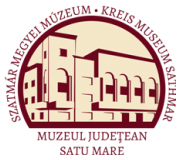Kiss Imola - Szőcs Péter Levente (szerk.): Arhitectura religioasă medievală din Transilvania (Satu Mare, 1999)
Adrian Andrei Rusu: Capela din Cetatea Rîşnovului (jud. Braşov). Reinterpretarea unui monument arheologic
72 Fig. 3. Profilul de nord al secţiunii S 9, din anul 1998. Legenda straturilor: A. zidul de incintă al cetăţii; B. refacere contemporană a zidului; D. fundaţia absidei capelei; E. ghizdul cristelniţei; 1. sol viu; 2. humus antic; 3. nivel de construcţie; 4. sol viu scos din şanţuri de fundaţie; 5. depuneri de pământ; 6. pietre izolate şi dărâmături; 7. sol vegetal actual; 9. ; 28. pământ cu mortar. Fig. 3. The northern profile of the section S 9, from the year of 1998. The explication of the levels: A. The enclosure wall of the fortress; B. Contemporan’ rebuildings of the wall; D. The foundation of the chapels apse; E. The parapet of the baptismal font; l.sterile; 2.ancient humus; 3.building level; 4.sterile extracted from the foundation grooves; 5.earth sediments; 6. isolated stones and ruins; 7.actual living soil; 9.; 28. earth with mortar. Fig. 4. Cisterna din interiorul capelei din Rîşnov (după FI. Costea) Fig. 4. The tank from the interior of the chapel from Râşnov (after FI. Costea) Fig. 5. Cetatea şi capela din Firtuşu (după K. Horedt) Fig. 5. The fortress and the chapel from Firtuşu (after K. Horedt) Fig. 6. Cetatea şi capela de la Feldioara Fig. 6. The fortress and the chapel from Feldioara Fig. 7. Capela şi cisterna de la Braşovia (după A. Prox) Fig. 7. The chapel and tank from Braşovia (after A. Prox) The chapel from the fortress of Râşnov. The reinterpretation of an archaeological monument -summary-In the fortress of Râşnov(Braşov county), namely in the inferior enclosure, it was descovered the foundation of a church as a result of the archaeological excavations made between 1972- 1976. Endowed with an altar having an semicircular ending and a simple nave, it posesses an interior installation which was designed to be a tank or a baptismal font. The partial resumption of the archaeological excavations, determines the author to take again the analysis of all the interpretations formulated up to now, regarding this building. As a result, it is sistematically established that it was built once in the XIV-th century, together with the fortress. Its building elements prove that it was a Catholic chapel, not an orthodox one, which was used for quite a long time(probably till the XVI-th century) .After being no longer used for religious purposes, in the old tank there were made hurried burials, of siege. The use of the interior installation is associated with other cases found in the neighbouring fortresses in which existed contemporary chapelsfFirtuşu, Feldioara) or even chapels endowed with tanks (Braşovia). The interpretation of places as being useful for late heathen christenings(Cumanians, Tartars etc.) or heretics (Bogomils), is to be taken
